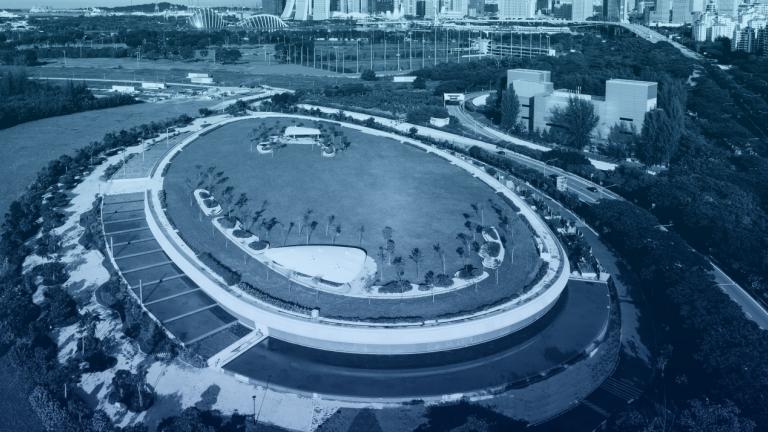
Every day, the Linggiu Reservoir does quiet battle with the ocean, feeding rainwater into the Johor River in southern Malaysia to keep its salt levels low enough to treat. Singapore, which built the reservoir in 1995, had been entitled to extract some 250 million gallons per day from the 123-kilometer-long river, meeting more than half its national needs. But a prolonged dry spell in 2016 saw reservoir levels fall to just 20% of capacity, leaving it shrunken and shallow.
“There was a real risk to our water supply,” Singapore’s prime minister, Lee Hsien Loong, later said. “It was a vivid reminder of why we have to be obsessed with saving water, and making every drop count.”
Water security isn’t a new concern for Singapore. The city-state’s tiny land mass and lack of natural lakes or aquifers have made water a priority ever since it gained independence in the 1960s.
“Though we are located near the equator and blessed with abundant rainfall, we are a severely water-stressed country due to a lack of land to collect and store all the rainwater that falls within Singapore,” explains Harry Seah, deputy chief executive for operations at the Public Utilities Board (PUB), Singapore’s national water agency. In 2015, the World Resources Institute ranked the country as among the most vulnerable to water stress, on a par with the arid states of Bahrain, Qatar, and Kuwait.
For decades, Singapore has satiated a significant amount of its demand through agreements to import water from neighboring Malaysia. One of those agreements expired in 2011. The second—the one that enables the country to draw water from the Linggiu Reservoir—is ongoing. But that source is vulnerable—not only to drought but to politics. “In the past, there were multiple times when the relationship between the two countries [Malaysia and Singapore] had some friction, with water being a matter of dispute,” says Stuti Rawat, a postdoctoral fellow in the Department of Asian and Policy Studies at the Education University of Hong Kong. In 2018, Mahathir Mohamad, then Malaysia’s prime minister, signaled his plans to renegotiate the Linggiu agreement, calling it too costly and the current terms—which have Singapore paying just three sen (less than one cent) per thousand gallons—“manifestly ridiculous.” “Because of that, it has been very important for Singapore to try to carve out its own independent water supply,” adds Rawat.
The rise in global temperatures has added new urgency to the situation. “With climate change, we are expecting more extreme weather with more intense rain and longer dry spells, as experienced in the US, China, India, and many other parts of the world,” Seah says.
These volatile patterns mean that the country can no longer rely on rainfall to predictably fill up its reservoirs.
Read the full article here: https://www.technologyreview.com/2021/12/23/1041299/singapore-water-independence-climate-change/






